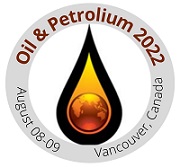Geophysical and Remote Sensing Techniques
Geophysical investigation strategies offer subsurface facts without digging or drilling. They can display vital geotechnical properties such as bedrock intensity and rock fine, as well as reservoirs of water or oil, metallic items or contaminants. If present-day geophysical investigations are integrated with traditional geotechnical investigations and their records, incredibly precise, non-stop and complete models may be produced for utility within numerous areas.
Remote imaging, performed by terrestrial, airborne or satellite-based systems has the capability to appropriately picture the Earth's surface with excessive resolution. This can be used for settlement and deformation tracking, surveying rock slides and making engineering geology critiques. State-of-the-art faraway sensing strategies at NGI consist of radar, optical image evaluation and Lidar and GigaPan Measurements. As with geophysical technology, the quality results are frequently executed via integration with the more conventional geotechnical Methods.
Related Conference of Geophysical and Remote Sensing Techniques
14th Global Summit on Artificial Intelligence and Neural Networks
12th International Conference and Exhibition on Mechanical & Aerospace Engineering
25th International Conference on Big Data & Data Analytics
Geophysical and Remote Sensing Techniques Conference Speakers
Recommended Sessions
- Reservoir Engineering and Reservoir Simulation
- Advanced Drilling Techniques and Safety
- Advanced Natural Gas Engineering
- Basin Studies
- Biofuels and Hydrocarbons
- Catalytic cracking
- Current Economics & Market Trends in Petroleum, Oil and Gas Industry
- Drilling and Well Operations
- Energy Conversion and Storage
- Enhanced oil recovery
- Entrepreneur Investment Meet
- Environmental Hazards & Risk Assessment in Oil and Gas Industry
- Geophysical and Remote Sensing Techniques
- Global Crisis and Challenges in Oil and Gas Industry
- Hydraulic Fracturing
- Innovations in Upstream and Downstream operations
- Oil and gas technology
- Oil, Gas Exploration and Production
- On shore and off shore operations
- Petro chemistry and Applications in Polymer Science
- Petroleum Distillation and Refining
- Petroleum Geology and Geoscience
- Recent Development in Oil and Gas industries
Related Journals
Are you interested in
- 5G Network Architecture, Deployment, and Optimization - Euro Satcomm 2026 (France)
- 6G Vision, Roadmaps, and Future Communication Paradigms - Euro Satcomm 2026 (France)
- Advanced MIMO and Beamforming Technologies - Euro Satcomm 2026 (France)
- Advancements in Predictive Analytics - ARTIFICIAL INTELLIGENCE MEET 2026 (Singapore)
- AI and Machine Learning for Wireless and Satellite Networks - Euro Satcomm 2026 (France)
- AI Ethics - ARTIFICIAL INTELLIGENCE MEET 2026 (Singapore)
- AI for Cybersecurity - ARTIFICIAL INTELLIGENCE MEET 2026 (Singapore)
- AI in Healthcare - ARTIFICIAL INTELLIGENCE MEET 2026 (Singapore)
- AI-Driven Sustainability & Climate Intelligence - ARTIFICIAL INTELLIGENCE MEET 2026 (Singapore)
- Ambient Intelligence - ARTIFICIAL INTELLIGENCE MEET 2026 (Singapore)
- Antenna Design and Smart Antenna Systems - Euro Satcomm 2026 (France)
- Artificial Intelligence in Gaming - ARTIFICIAL INTELLIGENCE MEET 2026 (Singapore)
- Artificial Intelligence in Music - ARTIFICIAL INTELLIGENCE MEET 2026 (Singapore)
- Artificial Neural Networks - ARTIFICIAL INTELLIGENCE MEET 2026 (Singapore)
- Bioinformatics - ARTIFICIAL INTELLIGENCE MEET 2026 (Singapore)
- Biometrics - ARTIFICIAL INTELLIGENCE MEET 2026 (Singapore)
- Cloud Computing - ARTIFICIAL INTELLIGENCE MEET 2026 (Singapore)
- Cloud-Native and Edge Computing for Communication Networks - Euro Satcomm 2026 (France)
- Convolutional Neural Network Model - ARTIFICIAL INTELLIGENCE MEET 2026 (Singapore)
- Deep Learning - ARTIFICIAL INTELLIGENCE MEET 2026 (Singapore)
- Digital Avatars - ARTIFICIAL INTELLIGENCE MEET 2026 (Singapore)
- Digital Modulation, Coding, and Multiple Access Techniques - Euro Satcomm 2026 (France)
- Extended Reality, Holographic, and Immersive Communications - Euro Satcomm 2026 (France)
- Fundamentals of Wireless Communication Systems - Euro Satcomm 2026 (France)
- Future Trends, Policy, and Global Roadmaps in Wireless and Satellite Communications - Euro Satcomm 2026 (France)
- GEO and MEO Satellite Networks and Applications - Euro Satcomm 2026 (France)
- Green, Energy-Efficient, and Sustainable Communication Networks - Euro Satcomm 2026 (France)
- Human-Centered AI & Cognitive Computing - ARTIFICIAL INTELLIGENCE MEET 2026 (Singapore)
- Intelligent Network Automation and Self-Organizing Systems - Euro Satcomm 2026 (France)
- Internet of Things and Massive Machine-Type Communications - Euro Satcomm 2026 (France)
- Introduction to Satellite Communication Technologies - Euro Satcomm 2026 (France)
- Joint Communication and Sensing Technologies - Euro Satcomm 2026 (France)
- Low Earth Orbit (LEO) Satellite Communication Systems - Euro Satcomm 2026 (France)
- Machine Learning - ARTIFICIAL INTELLIGENCE MEET 2026 (Singapore)
- Millimeter-Wave Communication Systems - Euro Satcomm 2026 (France)
- Mission-Critical and Emergency Communication Systems - Euro Satcomm 2026 (France)
- Natural Language Processing - ARTIFICIAL INTELLIGENCE MEET 2026 (Singapore)
- Non-Terrestrial Networks and Space–Air–Ground Integration - Euro Satcomm 2026 (France)
- Quantum-Safe and Post-Quantum Communication Technologies - Euro Satcomm 2026 (France)
- Radio Frequency Engineering and Propagation Models - Euro Satcomm 2026 (France)
- Reconfigurable Intelligent Surfaces and Smart Radio Environments - Euro Satcomm 2026 (France)
- Robotics and Mechatronics - ARTIFICIAL INTELLIGENCE MEET 2026 (Singapore)
- Satellite–Terrestrial Integrated Communication Networks - Euro Satcomm 2026 (France)
- Self-Organizing Neural Networks - ARTIFICIAL INTELLIGENCE MEET 2026 (Singapore)
- Software-Defined Networking and Network Virtualization - Euro Satcomm 2026 (France)
- Spectrum Management and Cognitive Radio Networks - Euro Satcomm 2026 (France)
- Terahertz and Optical Wireless Communications - Euro Satcomm 2026 (France)
- The Next Generation of Artificial Intelligence - ARTIFICIAL INTELLIGENCE MEET 2026 (Singapore)
- Vehicular, UAV, and Aerial Communication Networks - Euro Satcomm 2026 (France)
- Web-based Training Environment - ARTIFICIAL INTELLIGENCE MEET 2026 (Singapore)
- Wireless and Satellite Network Security and Privacy - Euro Satcomm 2026 (France)
- Wireless Network Architectures and Protocols - Euro Satcomm 2026 (France)

